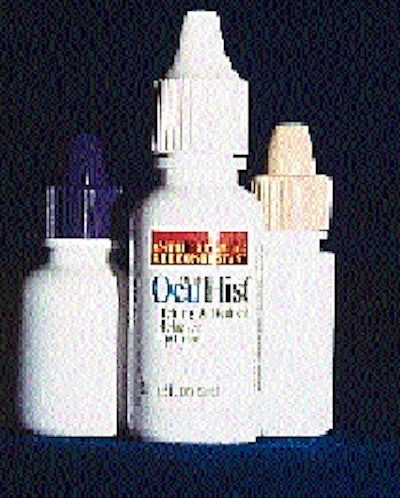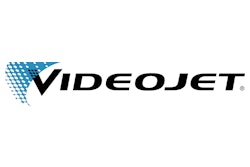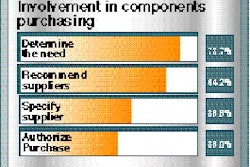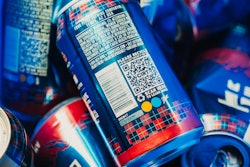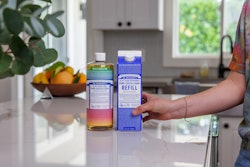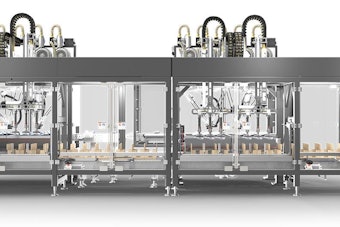When a company's main products are sterile injectibles and parenteral drugs, sterile processing becomes a way of life. Therapeutic over-the-counter eye care solutions could be less demanding, but Akorn, Inc., decided to retain its high standards. When the company acquired a sizable new contract to fill opthalmic solutions into 6- to 15-mL bottles of low-density polyethylene, the Decatur, IL, plant knew it needed increased production. And to position itself for additional production in the future, it went all out. Not only did the company install a new state-of-the-art line, it literally renovated part of its facility to convert it into a totally new sterile filling room. Akorn's Decatur plant was previously known as Taylor Pharmacal, a contract manufacturer and packager that Akorn acquired four years ago. "Essentially, the new contract called for filling and packaging an OTC opthalmic solution, but in batch sizes larger than what we were capable of producing at the time," says Steve Bishop, filling manager at Akorn. "So we knew we had to upgrade our filling to a higher-output line." At the time, Akorn was filling its own line of opthalmic solutions on a packaging line that consisted of what Bishop calls a traditional single-head liquid filler and with standard overhead track feeding for the plug and cap parts. It was capable of filling, plugging and capping small bottles at a maximum of about 25 bpm. That wouldn't be sufficient for the new contract. In evaluating new equipment, Akorn had a lot of choices that would substantially increase its throughput. But this investment in the future had to do more than simply boost production speeds. Like many other manufacturers today, Akorn wanted flexibility so the line could readily adapt to other products and sizes. And it had to accomplish all this without compromising the high sterility standards of the plant. In the end, Akorn purchased a Filamatic MNB/P-LD filler/plug-ger/capper monobloc system from National Instrument (Baltimore, MD). It has quadrupled Akorn's filling speeds to 100/min, offers the flexibility to accommodate other Akorn products, and provides significant advantages in a clean-room environment, says Bishop. "Boosting output over the existing single-head filler was easy," he says. "What attracted us to National's monobloc system were its advanced capabilities, its high accuracies and especially its unique direct-feed plug and capping functions. They reduce the possibility of particulate contamination and minimize interference with the laminar air flow in the filling room." The new line was added in the summer of '95. Sterility is vital Opthalmic solutions are treated much the same as sterile injectibles and parenterals. Akorn requires that its three packaging suppliers ship parts in three bags. All are gamma-irradiated by an outside firm before they're delivered to Akorn's plant in southern Illinois. Upon delivery, operators remove the first bag as the bottles enter a Class 10ꯠ clean room. The second bag is removed only under a laminar flow hood in a filling room also sterilized to Class 10ꯠ. The bottles are then transferred to a Class 100 filling area where the last bag is removed as the bottles are loaded into the stainless steel hopper of an orienter that Akorn had manufactured to order. Eventually, the bottles are filled, plugged with LDPE dropper tips and sealed with caps of polypropylene. All components are supplied by Lawson Mardon Wheaton Plastics (Mays Landing, NJ), Comar (Buena, NJ), or Medical Plastics (Santa Ana, CA). To help in tracking, Akorn never mixes packaging components from different vendors in a particular packaging run. "These opthalmic products receive just about the same treatment as our other injectible products," Bishop says. "We use virtually the same tolerances between our upper and lower limits as our brand-name products. If a container doesn't meet the tolerance we've established, it's rejected. This is just part of our manufacturing standards. It bears no relationship to the value of the product." How it works In the new line at Akorn, the small oriented bottles are discharged onto the filler conveyor and are fed by a timing screw to a turret infeed starwheel that places two bottles per cycle in pockets on the main turret star. The bottles index two-up to a four-nozzle filling station that's equipped with individual linear drive mechanisms for increased accuracy. The Filamatic's DUS fillers employ rolling diaphragm construction that provides a leak-proof seal between the piston and cylinder. This virtually eliminates the chance for particulate generation at this point. The fillers are equipped with electric vacuum pumps and leak detection systems that automatically stop the machine when a diaphragm ruptures. Also, a vacuum supply sensor prevents operation when the vacuum level drops below tolerance. It signals a diagnostics error message on the filler's control panel screen. The solution is mixed in a lab adjacent to the new filling room. The product is pumped directly from the mixing tank through a sterilizing filter and into a sterile receiving vessel located next to the filler. "In general, we're seeing fill accuracies of plus-or-minus 0.25 percent. I don't know that this accuracy is any better than our other filling machines. but coupled with the speed of the line, it's both accurate and productive," says Bishop. Rejects have plummeted Compared to the existing single-head liquid filler, the number of rejected containers in the new line has dropped considerably. In the past, the existing line had rejected an average of about 10% of a production batch. With the new line, the rejects are now about 2% of the larger batch sizes. For the most part, the high level of rejects in the past were created by misplaced or cross-threaded caps. "The capping system of the new line simply works better. And this also translates into fewer leakers in shipment," Bishop reports. The improvement is a combination of better capping coupled with improved placement of the plugs. Some of these fit quite tight, and the older machine had difficulty getting the plugs properly positioned in the bottles. "This new machine uses considerably more force in placing the plugs, thanks to servo motors, so it essentially eliminates the problem of poor caps caused by improperly placed plugs." The system's pick-and-place plugging and capping systems were "probably the main reasons we selected this machine. That's because they eliminate the problems of overhead tracks that are used on traditional pluggers and cappers," says Bishop. Both stations on the new monobloc employ a low-profile design. Each uses a stainless steel vibratory bowl that sorts and feeds parts in dual rows directly to the pick-up "nests" located next to the outside perimeter of the main turret wheel. This means that adjustable feed tracks are eliminated. Even more important, it allows sorting and feeding of both plugs and caps to take place below the tops of open bottles. This unusual design minimizes the possibility of particulates gaining access to the bottles, while it reduces interference with the laminar air flow that helps ensure sterility. "These benefits are very significant to our effort to maintain the highest possible cleanliness standards in our packaging operation," states Bishop. The low profile minimizes interruption of the sterile laminar air flow. "That can be a problem with overhead track systems," Bishop reports. Capped bottles are indexed by an outfeed starwheel onto another conveyor that takes them out of the clean room via a transfer box. On the other side of the wall, bottles receive a production code from an ink-jet system from Videojet (Wood Dale, IL), and are conveyed into an automatic tray packer. The trays are then taken to another plant for final labeling and cartoning. Programmability a plus Thanks to the microprocessor control, all of the sequential operations of the filler monobloc are programmable. This allows set up, adjustment and changeover parameters to be set via a keyboard. This virtually eliminates subjective settings from being made on the machine. Menu-driven screens guide the engineer or operator through the creation of the selected procedure, including bottle size, fill volume and sequence, plug size and pressure, cap size and torque pressure and torque delay. Other programming options can be entered via the screen, or can be changed when necessary. "We might run the contract products for two or three months consistently, and then have the line available for our own products," Bishop reports. "The contract is for a product that's kind of seasonal, so we can use the line for our regular products as well." System status and machine diagnostics are displayed on the screen for easier troubleshooting. Sensors check for no-bottle, no-fill, missing plug, missing cap, system backup and other parameters. Depending on the problem, the microprocessor may stop the next sequential function, while it allows the filler to maintain speeds or to pause the line. On-screen error messages help the operator understand the malfunction so corrective action can be taken quickly and efficiently. "For such a sophisticated system, the machine is very easy to operate, and it's extremely reliable," Bishop says. "When a tip is slow to be picked up, every other station slows down automatically and then returns to selected speeds. "Because it can make minute adjustments on the fly, we maintain very high production efficiencies." Tool-free changes Since the line is used to fill three bottle sizes, changeover time was an important issue to Akorn. Thanks to programmability, the new line can be set up or changed over from one size to another in about the same time as the previous single-head filler. "While this line is considerably more complex and sophisticated than what we had before, the set-up and changeover time is the same," Bishop says. "Many set ups don't require any manual labor; the operator simply presses a button on the console to change the fill tolerances, heights and other parameters. We keep these parameters in memory." A servo motor automatically adjusts the height of the filling table to the specification in the program. Infeed, outfeed and main turrets can be changed via threaded lock-down caps, when bottle diameters change. When stoppers or cap sizes change, workers change the nests via thumb screws. Even when a change requires personal attention, Bishop says that no tools are needed. All the adjustments are made via knobs, handwheels and levers. "This was a very strong selling point for this machine," he says. At the maximum, a complete changeover will take about 30 min. The monobloc was designed to also apply screw caps to 6-mL glass bottles, but that container hasn't yet gone into production. Bishop says that he's worked with a lot of different liquid filling machinery over the years and ranks this new system among the very best. "We're very impressed with this equipment," he concludes. "Even more so, National has gone out of its way to give us good service, too."
